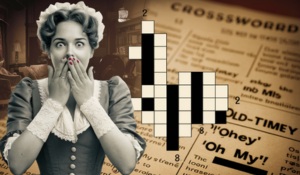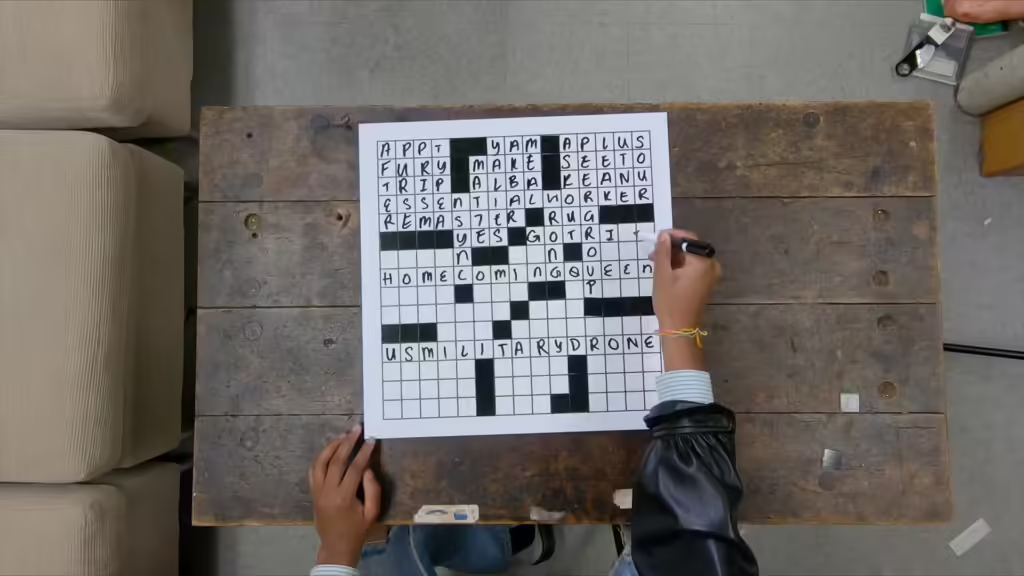Old Timey Oh My NYT – A Comprehensive Guide!
“Old Timey Oh My” captures the nostalgic and delightful experience of solving classic-style NYT crossword puzzles, blending traditional charm with modern creativity.
Introduction to “Old Timey Oh My”:
The phrase “Old Timey Oh My” perfectly captures the sense of nostalgia and excitement that many people feel when they encounter classic-style crossword puzzles. It’s a delightful way to describe the experience of solving puzzles that not only bring back memories of the past but also present modern twists. In the world of New York Times (NYT) crosswords, this phrase symbolizes the blend of traditional charm and contemporary cleverness that keeps puzzle enthusiasts engaged.
The History and Evolution of the NYT Crossword:

The New York Times crossword puzzle has a rich history that dates back to 1942. Originally created by Arthur Wynne, the first crossword puzzle was a simple, straightforward game. Over the years, it has evolved into a sophisticated and challenging puzzle format.
Early puzzles featured basic clues and simple wordplay, while modern NYT crosswords include intricate themes, clever wordplay, and complex clues. This evolution reflects changes in language, culture, and puzzle-solving techniques, making each day’s puzzle a unique challenge for solvers.
In the early days, crossword puzzles were often seen as a pastime for the educated elite, but as they evolved, they became more accessible and popular among a broader audience. The NYT crossword puzzle has adapted to include references to popular culture, historical events, and contemporary issues, making it relevant to today’s readers while maintaining its classic appeal.
Origin and Etymology of the Phrase:
The phrase “Old Timey Oh My” combines two elements to convey a sense of nostalgia and delight. “Old timey” is an informal term that refers to something from an earlier era, evoking memories of a simpler time. “Oh my” is an expression of surprise or joy.
Together, the phrase captures the feeling of encountering crosswords that harken back to classic styles while offering modern challenges. It reflects the enjoyment of solving puzzles that blend traditional elements with new, creative twists.
This phrase not only highlights the charm of vintage-style clues but also emphasizes the surprise and satisfaction of solving them. It’s a way of celebrating the continuity between the past and present in the world of crossword puzzles.
Also Read: Chikenaid – Revolutionizing Your Kitchen Experience!
Tips and Tricks for Solving the Clues:
Solving NYT crossword clues requires a combination of strategy, knowledge, and creativity. Here are some detailed tips to enhance your solving experience:
- Start with the Easy Clues: Begin by filling in the clues that seem straightforward. These are usually the most direct and can provide valuable letters for other clues. Building a solid base helps you tackle more challenging clues with greater ease.
- Use Cross-References: Many crossword clues intersect with each other. Pay attention to these connections, as solving one clue can provide hints for others. This cross-referencing technique is especially useful for filling in tricky parts of the puzzle.
- Think Outside the Box: NYT crosswords often feature clever wordplay, puns, and double meanings. Approach clues with a creative mindset and consider less obvious answers. Sometimes, the solution requires a bit of lateral thinking.
- Check Your Answers: Regularly review your answers to ensure they fit with intersecting clues. This can help you catch errors early and correct them before they become bigger issues.
Common Themes and Patterns in the NYT Crossword:
NYT crosswords often feature recurring themes and patterns that make solving them more enjoyable and less intimidating:
- Wordplay and Puns: Many clues involve playful language, such as puns or wordplay. Recognizing these patterns can make it easier to decode clues and find the correct answers.
- Cultural and Historical References: Puzzles frequently include clues related to current events, historical figures, or popular culture. Familiarity with these topics can help you solve clues more effectively.
- Hidden Words and Anagrams: Some clues require you to find words hidden within other words or rearrange letters to form new words. Being aware of these patterns can improve your ability to solve these types of clues.
How to Approach Crossword Clues?

Approaching crossword clues with a strategic mindset can make the process smoother and more enjoyable:
- Read the Clue Carefully: Take the time to read and understand each clue. Pay attention to every word, as even small details can provide important hints for finding the correct answer.
- Identify Clue Types: Determine whether the clue is straightforward, cryptic, or requires lateral thinking. Different types of clues need different solving approaches, so tailor your strategy accordingly.
- Use Known Word Patterns: As you fill in letters, look for common word patterns and letter combinations. This can help you guess potential answers for other clues and solve the puzzle more efficiently.
Resources for Improving Crossword Skills:
Improving your crossword-solving skills can be a rewarding experience. Consider using these resources to enhance your abilities:
- Puzzle Books: Invest in books that offer a variety of crossword puzzles. They provide practice and expose you to different solving techniques and styles.
- Online Forums and Communities: Join online forums and communities where you can discuss strategies, exchange tips, and seek advice from experienced solvers. Engaging with other puzzle enthusiasts can provide valuable insights and support.
- Puzzle Apps and Websites: Use mobile apps and websites that feature interactive crosswords. Many of these platforms offer hints, solutions, and practice puzzles that can help you improve your skills.
Also Read: Tsutsumi Serina – A Multifaceted Talent!
A Look at Popular Clues and Answers from Past Puzzles:
Examining popular clues and answers from previous NYT puzzles can provide valuable insights and inspiration:
- Classic Clues: Certain clues, such as “Famed Italian city” (answer: ROME), are common due to their broad appeal and general knowledge. Familiarizing yourself with these classic clues can make solving future puzzles easier.
- Creative Answers: Answers like “Mysterious figure” (answer: X) showcase the inventive nature of the puzzles. Understanding these creative solutions can help you recognize similar patterns in new puzzles.
FAQ’s:
1. What does “Old Timey Oh My” mean?
It reflects the joy and nostalgia of solving classic-style crossword puzzles that mix vintage elements with contemporary twists.
2. When did the NYT crossword puzzle start?
The NYT crossword puzzle began in 1942, created by Arthur Wynne, and has evolved significantly over the years.
3. How can I improve my crossword-solving skills?
Start with easy clues, use cross-references, think creatively, and check your answers regularly to enhance your solving skills.
4. What are common themes in NYT crosswords?
Themes often include wordplay, cultural and historical references, and patterns like hidden words or anagrams.
5. Where can I practice crossword puzzles?
Practice with puzzle books, join online forums, and use crossword apps and websites for interactive and varied solving experiences.
Conclusion:
The NYT crossword puzzle is a beloved tradition that merges classic puzzle charm with modern ingenuity. The phrase “Old Timey Oh My” encapsulates the nostalgic pleasure and intellectual challenge of solving these puzzles. By understanding their history, common themes, and utilizing effective solving strategies, enthusiasts can deepen their appreciation and skill in this engaging pastime.
Read More:














Post Comment